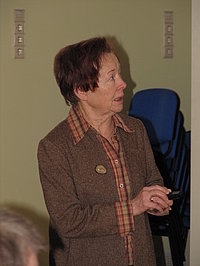Spectroscopy of some multiferroic compounds from the RFe3(BO3)4 family
Prof. Marina N. Popova (Institute of spectroscopy, Russian Academy of Sciences)
Multiferroics, i.e. materials in which at least two of several ferroic orders (e.g., magnetic,ferroelectric, ferroelastic) coexist, are interesting both for fundamental solid state physics and in view of possible applications. The outline of my lecture is as follows.
1. Introduction. A brief history of the magnetoelectric effect and of multiferroics. Role of symmetry.
2. Effects in magnetoelectric multiferroics:
- Magnetoelectric effect (H-induced P, E-induced M).
- Magnetodielectric effect (H-induced Δε).
- Magnetoelectric control (switching of P by H or of M by E).
- High-frequency properties: Electromagnons.
- Structure. Structural phase transition in RFe3(BO3)4.
- Magnetic properties of RE iron borates.
- Magnetoelectric and magnetodielectric properties of RE iron borates.
- People and equipment.
- Magnetic phase transition in SmFe3(BO3)4: splitting of Kramers doublets.
- Spectral evidences for a structural phase transition in EuFe3(BO3)4.
- Far infrared spectral signatures of the spin-phonon interaction in RFe3(BO3)4. Mechanisms of the spin-phonon coupling.
- Coupling between phonon and crystal-field excitations in multiferroic PrFe3(BO3)4. Coupled electron-phonon mode.
